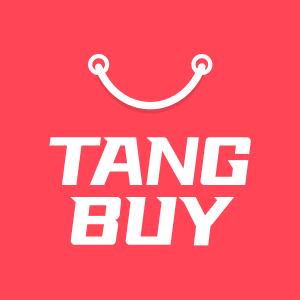Start Selling Online: 10 Simple Steps For Dropshipping Beginners

Ready to Start Selling online without the stress of managing stock? Dropshipping gives you a low-risk way to launch your business, even if you have no experience. You handle the shop, while suppliers ship products for you. Did you know that nearly 27% of online retailers use this model because it keeps costs down and makes scaling easy?
You can begin with a small investment, often far less than traditional shops.
Free tools and platforms help you get started quickly and keep your budget in check.
Key Takeaways
Dropshipping lets you sell things online without keeping stock. This helps lower your costs and makes risks smaller.
Pick a special niche that many people want. This helps you stand out and get loyal customers.
Look for good suppliers by checking product quality and shipping speed. Make sure they talk to you well.
Make a nice online shop with easy tools like Shopify or WooCommerce.
Set simple rules for shipping, returns, and payments. This helps customers trust you.
Use marketing tools like social media, ads, and email. These help you find and keep customers.
Watch your sales, customer reviews, and website data. This helps you make your shop better all the time.
Grow your business slowly by adding more products and new markets. Try to automate some jobs as you grow.
Dropshipping Basics
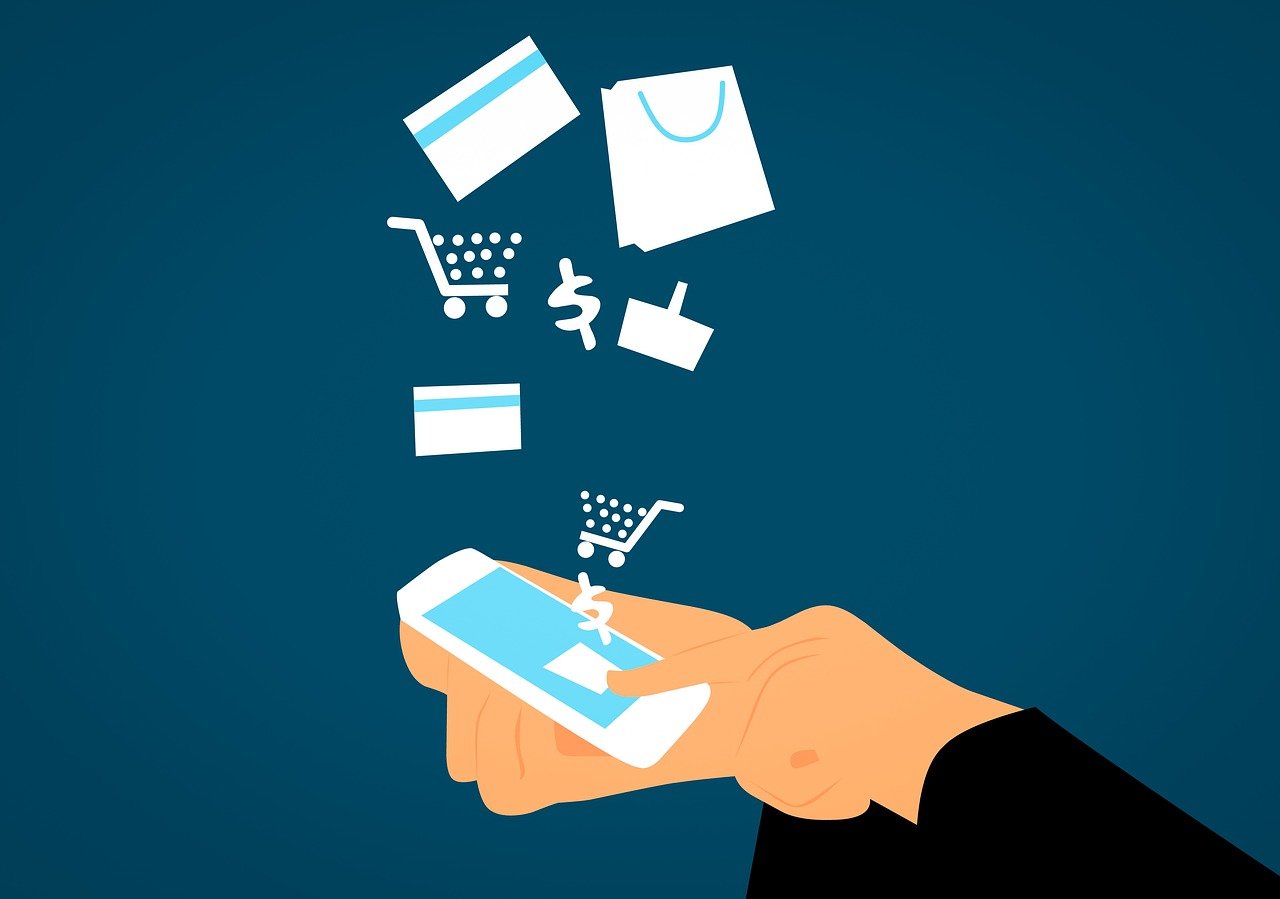
What Is Dropshipping
Dropshipping is a way for you to sell products online without ever handling the stock yourself. Here’s how it works in simple terms:
You set up an online shop and list products for sale.
When someone buys from your shop, you don’t pack or ship anything.
You send the order to a third-party supplier, like a wholesaler or manufacturer.
The supplier packs and ships the product straight to your customer.
You only pay the supplier after you make a sale, so you don’t need to buy stock in advance.
You focus on marketing, setting prices, and helping customers. The supplier takes care of storage, packaging, and delivery. This model lets you start a business with less money and less risk than a traditional shop.
How It Works
Let’s break down the dropshipping process step by step:
You choose products and connect with reliable suppliers.
A customer places an order on your online shop.
You forward the order details to your supplier, either by hand or using an app.
The supplier picks, packs, and ships the product directly to your customer.
You keep your customer updated with tracking information and support.
Tip: Many dropshipping suppliers let you add your shop’s branding to the packaging, so your business looks professional.
You never need to worry about storing boxes or running out of space. You can run your shop from anywhere with an internet connection.
Pros and Cons
Dropshipping sounds easy, but it has both good and bad sides. Here’s what you need to know:
Pros:
No need for storage space – suppliers handle all the packing and shipping.
Easy to test new products – you can add or remove items without losing money.
Scalable – you can grow your business without worrying about inventory.
Flexible – you can work from anywhere.
Cons:
Less control over product quality – you can’t check items before they ship.
Lots of competition – many people try dropshipping, so some markets get crowded.
Shipping can cost more – especially if you use several suppliers.
Stock issues – if your supplier runs out, your customer might have to wait.
Harder to build a unique brand – many shops sell the same products.
Remember, dropshipping gives you freedom and flexibility, but you need to choose your suppliers carefully and keep your customers happy.
Is Dropshipping for You
Your Goals
Before you jump in, think about what you want from dropshipping. People start dropshipping for many reasons. Here are some common goals:
Build a business that can grow by working with more than one supplier and always looking for ways to improve.
Give great customer service by replying quickly, making checkout easy, and fixing mistakes when they happen.
Keep your prices competitive by watching what others charge and changing your prices when needed.
Grow your business over time by learning new things, marketing well, and keeping up with trends.
Stay patient and keep going, even when things get tough.
You might also want to watch your sales numbers, improve your shop’s visibility with SEO, and plan for bigger order volumes. Many people also aim to make customers happy by giving clear product details, quick replies, and easy returns. Automating orders can help you handle more sales as your shop grows.
Tip: Write down your main goals before you start. This will help you stay focused and measure your progress.
Time and Budget
You do not need to quit your job or spend all your savings to start dropshipping. Most people spend about 40 hours to set up their shop. You can do this by working 1.5 to 2 hours each day for less than a month. This includes picking products and setting up your store.
Here is a simple table to show what you might need:
Aspect | Details | Estimated Range |
|---|---|---|
Time Commitment | Total time to launch, including research and setup | |
Basic Startup Budget | Home-based costs, essential services | $1,500 - $3,000 |
Large-Scale Startup | Advanced marketing, automation, premium services | $15,000 - $30,000 |
Marketing Budget | Branding, ads, and communication for first few months | $3,000 - $7,000 |
Emergency Fund | Reserve for 3-6 months of expenses | $5,000 - $25,000 |
Staffing/Management | Freelancers or staff for digital tasks | $2,000 - $5,000 |
You can start small and grow as you learn. Free tools and platforms help keep costs low at the beginning.
Common Myths
You might hear a lot of things about dropshipping that are not true. Let’s clear up some of the biggest myths:
Dropshipping is easy money.
You need to treat it like a real business and put in effort to succeed.There are no startup costs.
You will need to pay for things like your website, hosting, and ads.Dropshipping is illegal or a scam.
It is legal if you follow the rules in your country.You can only use suppliers from China.
Suppliers exist all over the world, not just on AliExpress.You can sell any product.
Some items are restricted or not allowed on certain platforms.Only small businesses use dropshipping.
Big companies like Amazon and Walmart use it too.You do not need to talk to customers or suppliers.
Building good relationships is key for growth and solving problems.The market is too crowded.
Picking the right niche helps you stand out.You must buy expensive courses or have experience.
Many free resources can help you learn.You need a huge social media following.
A big following helps, but it is not required.Dropshipping only works in the US.
You can run a shop from almost anywhere.Shipping always takes too long.
Shipping times depend on where your supplier is based.No one buys from dropshipping shops.
People buy if your shop looks professional and offers good service.Dropshipping is dead.
It is still going strong, but you need to keep learning and adapting.
Note: Do not let myths stop you. With the right mindset and effort, you can build a real business.
Choose a Niche
What’s a Niche
A niche is a focused segment of the market. You pick a specific group of people with shared interests or needs. Instead of selling everything, you choose products for a certain type of customer. For example, you might sell eco-friendly pet toys or stylish gym wear for teens. Picking a niche helps you stand out. You can target your marketing and speak directly to your ideal customer.
Tip: When you focus on a niche, you make it easier to build trust and loyalty. Customers feel like you understand them.
Find Profitable Ideas
You want a niche that brings in sales and keeps growing. Here’s how you can spot a profitable one:
Start with market research. Use tools like Google Trends or Ahrefs to check what people search for and how much competition exists.
Join social media groups. See what people talk about and what problems they want to solve.
Pick a niche with many product options. This lets you add new items and grow your shop.
Mix up your products. Include evergreen items (steady demand), trending products (hot right now), and seasonal goods (popular at certain times).
Use SEO tools to check if the competition is too high. Look for keywords that are not too crowded.
Choose something you know or love. If you care about your niche, you can market it better and connect with customers.
Keep an eye on customer feedback and your profits. Adjust your niche if you see better opportunities.
Here are some of the most profitable dropshipping niches right now:
Print on demand products (like custom t-shirts)
Coffee and brewing gear
Gift baskets for holidays and events
Health and beauty care
Baby clothes and toys
Pet supplies
Fashion and accessories
Electronics
Sustainable, eco-friendly products
Products in these niches often have high demand, good profit margins, and lots of room to grow.
Check Demand
You need to know if people want what you plan to sell. Online tools make this easy. Try these methods:
Tool Type | How It Checks Demand | Pros | Cons |
|---|---|---|---|
Social Media (Instagram, TikTok) | Shows trending products and hashtags | Real-time trends, easy to use | No search volume data |
Google Trends | Tracks keyword popularity over time and by location | Free, visual, compares keywords | Limited detail on related topics |
Keyword Tools (Ahrefs, Google) | Gives search volume and keyword suggestions | Shows demand and competition | Some features need paid accounts |
Marketplaces (Amazon) | Lists best sellers and customer reviews | See what sells, check reviews | No trend data over time |
Dropshipping Tools (Ecomhunt, Sell The Trend) | Combines supplier data, competitor analysis, and ad insights | Comprehensive, finds winning products | Some tools cost money |
You can also use tools like AliExpress Dropshipping Center or Niche Scraper to spot trending products. Manual research works too. Check best sellers on Amazon or use ZIK Analytics to see which products have high sales but low competition.
If you see steady or rising interest in your niche, you’re on the right track. Always double-check demand before you commit.
Research Competitors
Spot Main Competitors
You need to know who you are up against before you start selling. Spotting your main competitors helps you understand the market and find ways to stand out. Here’s how you can do it:
Search for shops like yours on Google and social media using keywords from your niche. Look for both big and small players.
Check what products they sell, who their suppliers are, and how many orders they get. Read customer reviews to see what buyers like or dislike.
Study their prices. Are they cheap, premium, or somewhere in the middle? This tells you how they position themselves.
Look at their sales channels. Do they sell on Amazon, eBay, or their own website? Notice their ads and marketing messages.
Explore their social media. See what kind of posts they share and who follows them. Try to picture their ideal customer.
Make a list of your top competitors. Keep it updated as you find new shops or trends.
You can also use tools like DSers, Koala Inspector, or Helium 10 to dig deeper into their sales and ad strategies. Marketplaces like Amazon, Etsy, and AliExpress show you best sellers and trending products. This gives you a clear view of what works in your niche.
Tip: Keep an eye on your competitors, but focus on what makes your shop unique.

Analyse Strengths
Once you know your competitors, you should look at what they do well. This helps you learn and improve your own shop. Here are some strengths you might notice:
Great customer service and quick replies
Unique products or exclusive deals with suppliers
Fast shipping and reliable delivery
Strong brand image and a well-designed website
Clever marketing, like good SEO, fun social media posts, and smart ads
High customer engagement, such as lots of comments or shares
Regular updates to match new trends
Using feedback to make their shop better
Try to spot patterns. Do top shops always answer questions fast? Do they use bright colours or funny posts? Maybe they offer something special, like vegan-friendly products or custom packaging. Take notes on what stands out.
If you see a competitor with lots of happy customers, ask yourself what they do differently. Can you do it better?
Learn from Others
You can pick up many tricks by watching successful dropshipping stores. They often use smart tactics to boost sales and build trust. Here’s a quick table to show what you can learn:
Lesson Area | Key Takeaways |
|---|---|
Niche Selection | Focus on a specific, profitable niche that matches your interests and market trends. |
Supplier Selection | Work with reliable suppliers who ship fast and communicate well. |
Store Setup | Use a clean, mobile-friendly design with quality photos and helpful apps. |
Customer Focus | Make shopping easy and enjoyable, from browsing to delivery. |
Marketing Strategy | Try new marketing ideas and keep up with changes on social media. |
Operational Efficiency | Make sure orders go out quickly and customers get tracking info. |
Top shops often show best-sellers on their homepage. They use real customer reviews and encourage buyers to post photos with branded hashtags. Some run giveaways or work with influencers to reach more people. Others use playful branding or support causes, like animal rescue, to connect with shoppers.
Watch what works for others, then add your own twist. You do not need to copy—just get inspired and make your shop stand out.

Find Suppliers
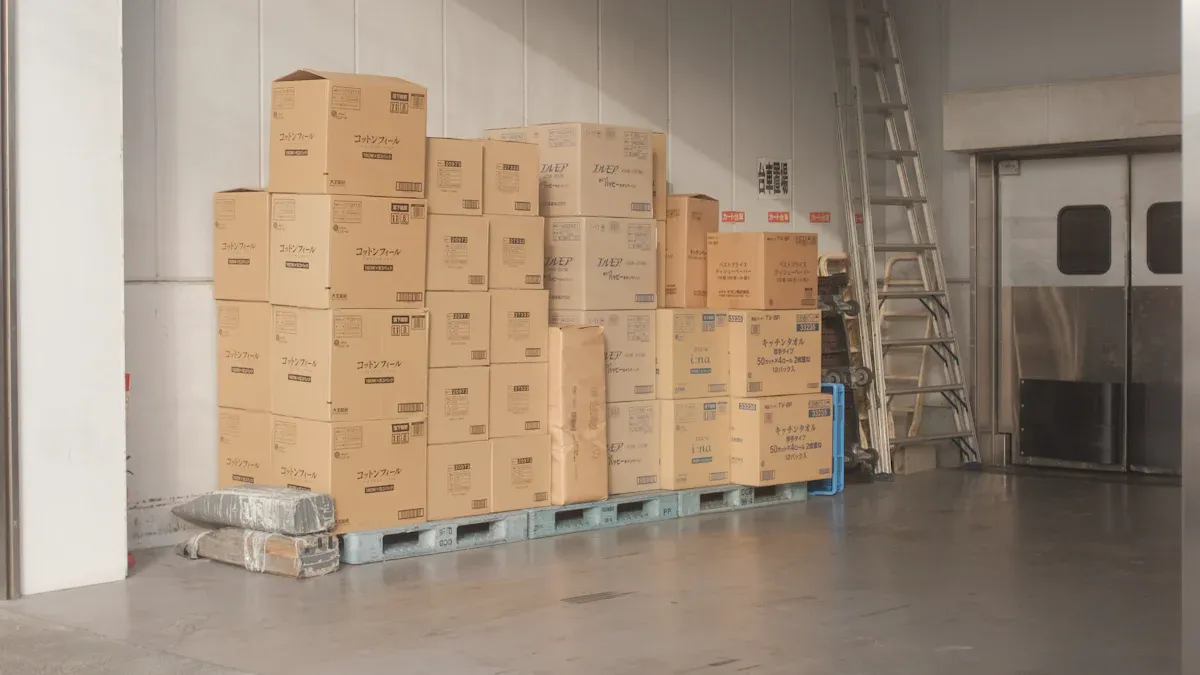
Where to Look
There are many ways to find dropshipping suppliers. Start by checking online directories and platforms. These websites link you to thousands of suppliers worldwide. Here are some good places to begin:
Spocket – Connects you with suppliers in the USA and Europe.
AliExpress Dropshipping – Has a huge choice of products, like gadgets and clothes.
Modalyst – Shows trending brands and links easily to your shop.
SaleHoo – A trusted list with checked suppliers in many niches.
Doba – Lets you manage products from different suppliers together.
Wholesale2B – Over a million products and works with Amazon and eBay.
Worldwide Brands – Gives lifetime access to a big list of checked suppliers.
Sunrise Wholesale – A general wholesaler with thousands of products.
MegaGoods – Focuses on electronics and home items.
Inventory Source – Offers inventory syncing and links with over 180 suppliers.
You can also use UK directories like TheWholesaler.co.uk and eSources for local suppliers. Using local suppliers often means quicker shipping, lower costs, and easier talking. You skip customs fees and help the local economy too.
Tip: Free tools and directories let you compare suppliers before you choose. Always check if the platform lists checked suppliers.
What to Check
Not every supplier is the same. You want partners who are reliable and easy to work with. Here’s what you should look for:
Criterion | What to Look For |
|---|---|
Product Quality | Order samples to check quality and packaging. |
Shipping Reliability | Ask about delivery times, tracking, and how they handle lost parcels. |
Communication | Test how quickly they reply and if they answer your questions clearly. |
Return Policies | Make sure they have clear and fair return or exchange rules. |
Experience | Choose suppliers who know dropshipping and understand your needs. |
Legal Compliance | Check if their products meet safety and legal standards in your country. |
Pricing Transparency | Avoid hidden fees or unclear payment terms. |
Technology Integration | See if they work with your shop platform for easy order management. |
You can also read reviews on sites like Trustpilot or join dropshipping groups to see what others say. Stay away from suppliers who want odd payments, have many complaints, or cannot prove their business details.
Always order a sample before you sell a product. This helps you spot problems early.
Communicate Well
Good communication helps your dropshipping business run well. You need to build trust with your suppliers. Here are some tips:
Use clear, simple words in your emails or chats.
Set rules for how fast they should reply and give updates.
Ask about their way of handling urgent orders or problems.
Keep records of your talks for later.
Be polite and professional, even if things go wrong.
Working with local suppliers often makes talking easier. You share the same language and time zone, so you get faster replies and fewer mix-ups. This helps you fix problems quickly and keeps your customers happy.
Building a strong relationship with your supplier can lead to better deals and more support as your shop grows.
Avoid Pitfalls
Picking the right supplier is very important for your dropshipping business. Many beginners make the same mistakes, but you can avoid them if you know what to watch for. Let’s look at the most common problems and how you can stop them:
Common Pitfall | Description | How to Avoid |
|---|---|---|
Supplier Stock Issues | Selling products that are out of stock leads to delays and cancellations. | Request real-time inventory access, use multiple suppliers, get regular inventory updates, communicate promptly with customers. |
Inaccurate Product Descriptions | Incorrect product info causes dissatisfaction and returns. | Order samples, write custom descriptions, use high-quality images, hold suppliers accountable. |
Damaged or Defective Products | Products arrive damaged or faulty, harming reputation. | Vet suppliers for packaging quality, place test orders, ensure clear return policies. |
Shipping Delays | Late deliveries frustrate customers and damage trust. | Choose reliable shipping, set realistic delivery expectations, offer expedited shipping, communicate delays. |
Invalid Tracking Information | Providing wrong tracking numbers causes customer frustration. | Verify tracking numbers before sharing, use automated systems, select suppliers with accurate tracking. |
Lack of Branding Opportunities | Limited control over packaging reduces brand presence. | Use suppliers offering branded packaging or personalised notes, reinforce branding via website and marketing. |
You might want to trust the first supplier you find, but take your time. Always check their stock levels before you sell anything. If you sell something that is not in stock, your customer will wait too long or cancel. Ask your supplier for updates on what they have. Some platforms let you link your shop to the supplier’s stock, so you always know what is available.
Product descriptions can cause problems too. Suppliers sometimes use bad translations or miss details. Order a sample before you add a product to your shop. Write your own descriptions and take your own photos if you can. This helps you find any issues and makes your shop special.
Broken or faulty products can hurt your reputation. Test your supplier by making a small order first. Check the packaging and the product when it arrives. If you see problems, ask about their return rules. Good suppliers will fix mistakes quickly.
Shipping delays are annoying for customers. People want their orders fast. Pick suppliers who deliver quickly and have a good record. Tell your customers how long delivery will take. If there is a delay, let your customer know straight away. Some suppliers offer faster shipping for a bit more money.
Tracking numbers are important too. Wrong or missing tracking details make customers worry. Always check tracking info before you send it to your customer. Automated systems can help you do this.
Branding helps your shop stand out. Some suppliers let you add your logo or a thank-you note to the package. If you cannot do this, use your website and emails to tell your brand story.
Tip: Build a good relationship with your supplier. Talk often, give feedback, and stay loyal if they do a good job. This can help you get better deals and faster service as your business grows.
If you watch out for these problems, your customers will be happy and your dropshipping shop will run well.
Build Your Store
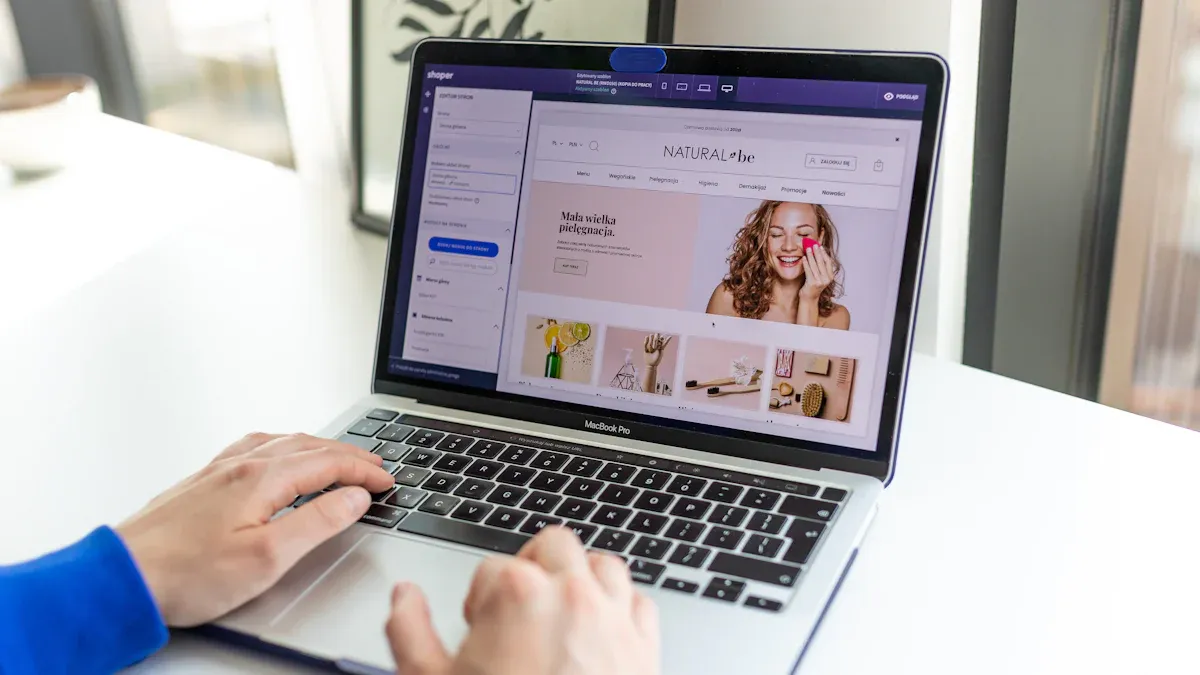
Pick a Platform
You need a place to sell your products. This is where an e-commerce platform comes in. Think of it as your online shop’s home. You want something easy to use, safe, and packed with features for dropshipping. Here’s a quick look at some of the most popular platforms and what makes each one stand out:
Platform | Highlighted Advantage |
|---|---|
Shopify | Best overall, easy setup, scalability, 1-click dropshipping. |
WooCommerce | Best for SEO, plugin flexibility, blogging power. |
ShopBase | Built-in dropshipping tools, automated store creation. |
Shift4Shop | Budget-friendly for US sellers, free with Shift4 payments. |
BigCommerce | Great for scaling, advanced features, no transaction fees. |
Shopify is a favourite for beginners. You can set up your shop in minutes. WooCommerce works well if you already use WordPress. ShopBase and Shift4Shop offer special tools for dropshipping. BigCommerce helps you grow your business without extra fees.
Tip: Most platforms offer free trials. Try a few before you decide. This helps you find the one that feels right for you.
Set Up Storefront
Once you pick your platform, it’s time to build your storefront. This is what your customers see first. You want it to look clean and easy to use. Start by choosing a template or theme. Most platforms have free and paid options. Pick one that matches your brand and products.
Here’s a simple checklist to help you set up your storefront:
Add your shop name and logo.
Write a short welcome message.
Upload clear product photos.
Set up easy-to-read menus.
Add contact details and a simple “About Us” page.
Make sure your shop works well on phones and tablets.
Many platforms, like Shopify and Shift4Shop, use drag-and-drop tools. You can move things around without any coding. This makes it easy to create a shop that looks professional, even if you’re just starting out.
A tidy, well-organised shop helps customers trust you and makes shopping easier.
Design Basics
Good design makes your shop stand out. You don’t need to be an artist. Just follow a few simple rules:
Use two or three main colours. Too many colours can look messy.
Pick easy-to-read fonts. Avoid fancy or hard-to-read text.
Use big, clear photos for your products.
Leave space between sections. This keeps your shop from looking crowded.
Make buttons and links easy to find.
A simple design helps customers focus on your products. If you want to add extra features, look for plugins or apps. WooCommerce and Shopify both have lots of options. You can add reviews, chat support, or even countdown timers for sales.
Keep your design simple and friendly. Your customers will feel more comfortable and are more likely to buy.
Key Features
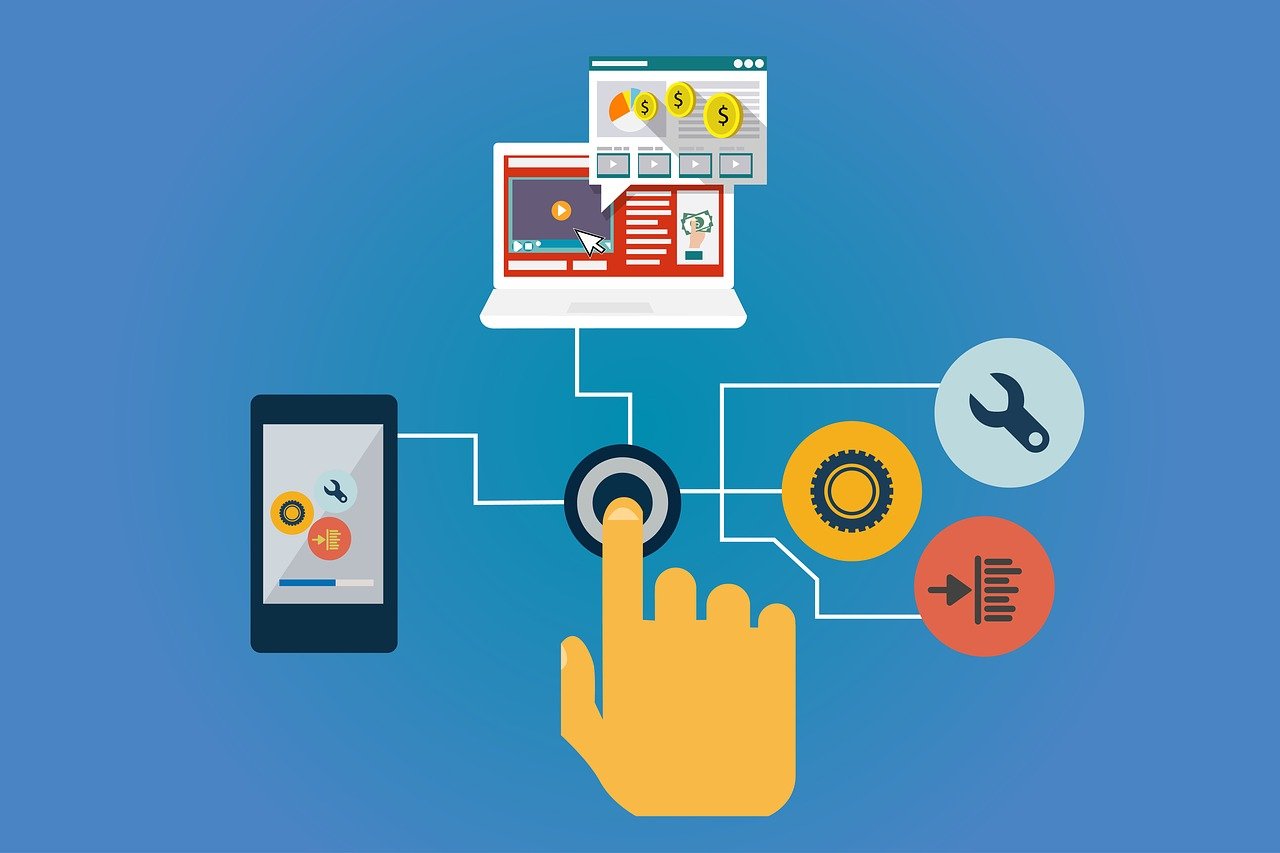
When you build your dropshipping store, you want it to look trustworthy and easy to use. The right features help you attract customers and keep them coming back. Let’s look at what you should include to make your shop stand out.
1. Trust-Building Pages
You need to show customers that your shop is real. Add these pages:
About Us: Tell your story. Share why you started your shop and what makes you different.
Contact Us: Give customers a way to reach you. Use a simple form or show your email address.
FAQ: Answer common questions. This saves time and helps customers feel confident.
2. Clear Store Policies
People want to know what to expect. Write clear rules for:
Delivery times and shipping costs
Returns and exchanges
Privacy and data protection
Put these policies where customers can find them easily. This helps avoid confusion and builds trust.
3. High-Quality Product Images
Photos matter. Use bright, sharp images that show your products from different angles. Customers cannot touch or see items in person, so good pictures help them decide.
Tip: Take your own photos if you can. If not, ask your supplier for the best images.
4. Strong Brand Identity
Your shop needs a name, a logo, and a style. Pick colours and fonts that match your brand. Use the same look on every page. This makes your shop feel professional and memorable.
Branding Checklist | Why It Matters |
|---|---|
Shop name & logo | Easy to remember |
Colour palette | Sets the mood |
Fonts | Keeps text clear |
Layout | Guides the customer’s journey |
5. The Right Sales Channel
Choose a platform that fits your needs. Some people like Shopify for its simple setup. Others use Wix, Amazon, eBay, or Facebook Shops. Pick one that feels easy for you and lets you customise your shop.
6. Reliable Suppliers
Work with suppliers who ship fast and answer your questions. Check their reviews and test their service before you add their products to your shop.
7. Marketing Tools
You want people to find your shop. Use free tools for email marketing, social media posts, and discounts. Many platforms have built-in apps to help you promote your products.
Note: If you feel stuck, you can hire an expert to help with design or setup. This saves time and makes your shop look even better.
When you include these key features, your dropshipping store will look professional and ready for business. Customers will feel safe shopping with you, and you’ll find it easier to grow your brand.
Business Setup
Register Business
You must register your dropshipping business before selling anything. This step makes your shop official and keeps you out of legal trouble. Most people start as sole traders because it is fast and easy. If you want more safety, you can make a limited company. Registering lets you open a business bank account and work with suppliers more easily.
Here’s what you usually need to do:
Show your ID, like a passport or driving licence.
If you start a company, you might need to give extra papers, like a registration certificate.
Some things, such as medicines or food, need special permits or approval.
After you register, the tax office is told automatically.
You must join the Chamber of Industry and Commerce. They charge a yearly fee based on your earnings.
Using Shopify or Amazon does not mean you can skip this step. You must register your business if you want to sell for profit.
Tip: Always check if your products need special permits before you list them.
Legal Basics
Running a dropshipping shop means you must follow the law. You need a business licence or sales permit in most places. If you sell on Amazon, eBay, or Etsy, you must follow their rules for dropshipping. Breaking these rules can get your account closed.
You must keep your customers’ data safe. This means protecting their details, especially when you share them with suppliers or use other apps. If you sell special items, like alcohol or health products, you need extra licences and must follow strict rules.
Here are some key points to remember:
Collect and pay sales tax or VAT, depending on where you sell.
Make sure your website has an imprint, terms and conditions, and privacy policy.
Do not use products from forced labour or banned sources.
If you are under 18, you may need an adult to help run your business.
Note: It is smart to talk to a legal or tax expert. They can help you avoid mistakes and fines.
Payment Setup
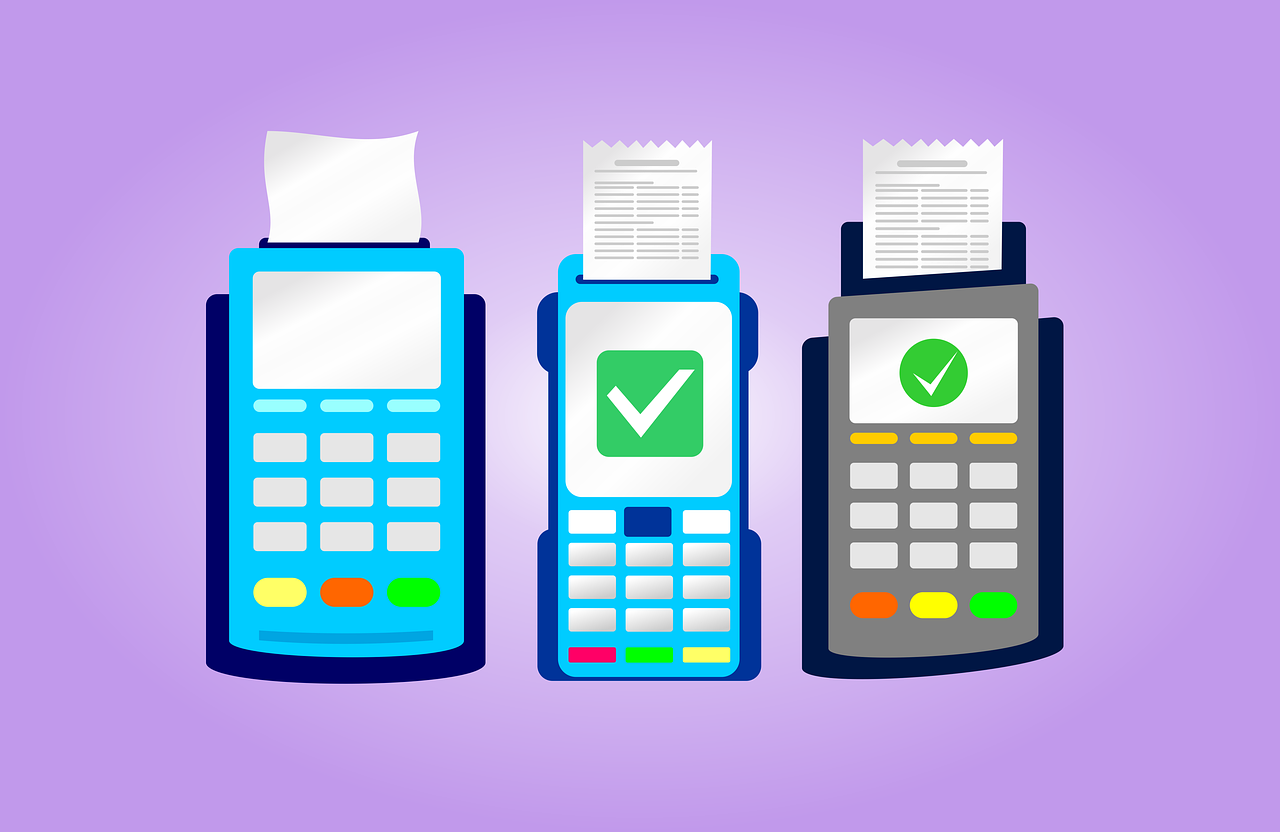
You want your customers to pay easily and safely. Setting up payment gateways is important for this. The most popular choices for dropshipping shops are PayPal, Stripe, and Shopify Payments. These gateways work in many countries and with different currencies, so you can sell worldwide.
Here are some top choices:
PayPal: Works in over 200 countries and supports 25 currencies. It is easy to use and trusted by shoppers.
Stripe: Supports more than 40 countries and 135 currencies. It works well with Shopify and WooCommerce. Stripe lets you accept Apple Pay and Google Pay too.
Shopify Payments: Great if you use Shopify. It is simple to set up and has no extra transaction fees.
Skrill: A good alternative, available in over 130 countries.
Amazon Pay: Lets customers pay using their Amazon account.
Authorize.net and 2Checkout: Other options, especially if you sell in the USA.
When you pick a payment gateway, check the fees, country support, and how well it works with your shop. Offering more than one payment method helps you reach more customers and build trust.
Customers like to see familiar payment options. This makes them feel safe and more likely to buy from your shop.
Taxes
Taxes can feel confusing when you start dropshipping, but you can handle them with the right approach. You need to know which taxes apply to your shop and how to stay on the right side of the law. Let’s break it down so you feel confident.
1. VAT and Sales Tax: What’s the Difference?
If you sell to customers in the UK or Europe, you’ll deal with VAT (Value Added Tax). In the US, you’ll face sales tax. These taxes work differently, but both mean you must collect money for the government when you make a sale.
VAT (Europe and UK):
You must register for VAT if your sales go over the EU threshold of €10,000 for cross-border sales.
The One-Stop Shop (OSS) system lets you register in one EU country and file a single VAT return for all EU sales. This makes things much easier.
VAT rates change from country to country. Some countries charge 17%, others up to 27%. Certain goods may have lower or zero rates.
You must work out where your customer lives to apply the right VAT rate.
Brexit has made selling between the UK and EU more complex, so check the latest rules.
Sales Tax (United States):
Each state sets its own sales tax rules. Some states want you to collect sales tax if you have a “nexus” (like a warehouse or lots of sales) there.
You must collect and send sales tax to the right state if required.
Automated tax tools can help you keep up with changing rates and rules.
2. Why Proper Record-Keeping Matters
You need to keep clear records of every sale, return, and expense. Most countries want you to keep these records for 6 to 10 years. Good records help you:
File your tax returns on time
Prove you paid the right amount if you get audited
Avoid fines or penalties
Tip: Use accounting software or apps to track your sales and expenses. This saves time and reduces mistakes.
3. Common Tax Tasks for Dropshippers
Task | Why It Matters |
|---|---|
Register for VAT or sales tax | Legal requirement once you pass thresholds |
Charge the correct tax rate | Keeps you compliant and avoids customer issues |
File tax returns on time | Prevents fines and keeps your business safe |
Makes tax time easier and protects you |
4. Get Help When You Need It
Tax rules change often. You might feel unsure about what to do. Don’t worry—many dropshippers use automated tax software or hire a professional. These options help you:
Stay up to date with new laws
File returns correctly
Avoid costly mistakes
Note: If you ignore tax rules, your customers could face surprise fees, or you could get fined. Staying compliant keeps your business running smoothly and builds trust.
You don’t need to be a tax expert to run a dropshipping shop. Learn the basics, use the right tools, and ask for help when you need it. This way, you can focus on growing your business with peace of mind.
Add Products

Import Items
Now comes the fun part—adding products to your shop! Most dropshipping platforms make this step easy. You can use built-in tools or free apps to import items straight from your supplier’s catalogue. With just a few clicks, you can pull in product photos, details, and prices.
Here’s how you can get started:
Choose the products you want to sell from your supplier’s website.
Use your platform’s import tool or a dropshipping app like DSers, Oberlo, or Spocket.
Check that each product has clear images and accurate information.
Edit the product titles so they match your brand’s style.
Remove any supplier logos or watermarks from images.
Tip: Don’t add too many products at once. Start with a small range so you can focus on quality and customer service.
Write Descriptions
Product descriptions can make or break your sales. You want to help shoppers imagine using your products. A good description answers questions and builds trust. Here’s how you can write descriptions that convert:
Picture your ideal customer. What do they care about? What problems do they want to solve?
Use real customer reviews to highlight benefits and tackle common worries.
Grab attention with a catchy first line. Build interest by sharing what makes the product special.
Use bullet points to make details easy to scan.
Focus on benefits, not just features. Tell shoppers how the product will make their life better.
Show what makes your shop unique. Maybe you offer faster shipping or eco-friendly packaging.
Use strong, positive words to create excitement.
Add keywords naturally so people can find your products online.
Try telling a short story or sharing how the product fits into daily life. This helps your shop feel more personal.
Keep your descriptions fresh. Test different styles and see what works best. If you spot a product with lots of returns or questions, update the description to make things clearer.
Set Prices
Setting the right price is key for your dropshipping shop. You want to cover your costs and still attract buyers. There are several ways you can price your products:
Pricing Strategy | What It Means | Good Points | Watch Out For |
|---|---|---|---|
Charge more for top quality or great service | Higher profits, strong brand image | Fewer sales if price too high | |
Tiered Markup | Add different markups for cheap and expensive products | Flexible, suits many products | Can get confusing |
Competition-Based | Match or beat your competitors’ prices | Stays competitive | Lower profits if prices drop |
Psychological Pricing | Use prices like £9.99 to make items seem cheaper | Boosts sales, easy to use | Not always effective |
You might need to try a few strategies to see what works for your shop. Keep an eye on your costs, including shipping and fees. Use free pricing tools or apps to help you track and adjust prices quickly.
Remember: The best price is one that covers your costs, gives you a profit, and still feels fair to your customers. Don’t be afraid to test and tweak your prices as you learn what your shoppers like.

Shipping & Returns

Shipping and returns can make or break your dropshipping shop. Customers want to know when their order will arrive and what happens if they need to send something back. If you get these policies right, you build trust and boost your sales.
Many shoppers check your shipping and return rules before they buy. In fact, 67% of people look at the return policy first. If your policy is clear and fair, you make it easy for them to say yes. When customers know they can return items without hassle, they feel safe. About 92% of shoppers will buy again if the return process is simple.
What to Include in Your Shipping Policy
You want your shipping policy to answer all the big questions. Here’s what you should cover:
How long does delivery take?
Which countries do you ship to?
What are the shipping costs?
Do you offer free shipping or promotions?
How do you handle lost or delayed parcels?
Where can customers find tracking information?
Many successful shops offer free shipping or free shipping over a certain order value. High shipping fees cause nearly half of shoppers to leave their carts behind. If you can’t offer free shipping, explain your costs clearly. Always set realistic delivery times and keep your promises.
Tip: Place your shipping policy in your website footer and at checkout. This helps customers find it easily.
Creating a Customer-Friendly Return Policy
Returns are common in online shopping. About 30% of online orders get sent back, much more than in physical shops. A good return policy can turn a one-time buyer into a loyal customer. If your rules are too strict, people may not come back.
Here’s what your return policy should explain:
How long customers have to return an item (for example, 15 or 30 days).
What condition the product must be in (unused, with tags, or in original packaging).
Who pays for return shipping.
How refunds or exchanges work.
How to start a return (email, portal, or form).
Let’s look at how some well-known shops do it:
Store Name | Return Timeframe | Product Condition | Return Shipping Fees | Refund Policy | Shipping Policy Highlights |
|---|---|---|---|---|---|
Shopify | Clear timeframes | Restocking fees possible | Details who pays | Refunds explained | Realistic shipping times, easy to find |
AliExpress | 15 days | Unopened, original box | Free returns for buyers | Standard refund | Free returns highlighted |
Sage & Sill | 30 days | Unused, with tags | Portal instructions | Refund after approval | Transparent portal, clear instructions |
Vikings Valhalla | 30 days | Excellent condition | Email to start return | Similar to Sage & Sill | Clear refund policy, no return portal |
A customer-friendly policy sets clear timelines and steps. It also explains who pays for shipping and how refunds work. This helps avoid disputes and keeps everyone happy.
Note: Make your policies easy to read. Use simple words and short sentences. Place them where customers expect to find them, like in your footer or at checkout.
When you manage shipping and returns well, you reduce complaints and encourage repeat business. Clear, fair policies show that you care about your customers and want them to shop with confidence.
Start Selling with Dropshipping
Prepare Launch
You have set up your shop and picked your products. Now it is time to get ready for launch. This step is all about making sure everything works smoothly before you start selling to real customers. A good launch can help you avoid problems and make a great first impression.
Here is a handy table to guide you through the main steps:
Step | Key Actions and Considerations |
|---|---|
Select a Profitable Niche | Use social trends and tools like Google Trends to find a niche with strong demand and a clear audience. |
Find Reliable Suppliers | Choose suppliers with a good reputation, fast shipping, and easy integration with your shop. Test their service before launch. |
Pick Winning Products | Use research tools to spot bestsellers. Check what your competitors offer and look for ways to do better. |
Decide if you want your own shop (like Shopify) or to use a marketplace (like eBay). Pick what fits your products and customers. | |
Focus on Marketing & SEO | Plan your marketing. Use keywords in your shop, set up social media, and get ready to promote your products. |
Provide Unique Value | Offer something special, like eco-friendly items or custom packaging, to stand out from other shops. |
Avoid Common Pitfalls | Double-check your research, test your website, and make sure your suppliers are reliable. |
Before you open your doors, test your shop. Place a test order, check your payment system, and make sure your emails work. Use supply chain tools to track your stock and orders. If you plan to sell worldwide, check your shipping and taxes for each country. A launch checklist helps you spot anything you missed.
Tip: Promote your shop on different channels before launch. This builds excitement and brings in your first visitors.
Marketing Basics
You cannot just open your shop and wait for sales. You need to tell people about your products. Marketing helps you reach new customers and keep them coming back. Here are some simple ways to get started:
Paid Advertising Campaigns: Use Google Ads or Facebook Ads to reach people who want your products. Start with a small budget and test what works.
Content Marketing: Write blogs or make videos about your products. Use keywords so people can find you on search engines.
Social Media Marketing: Share photos and updates on Instagram, Facebook, or TikTok. Join trends and talk to your followers.
Email Marketing: Collect emails from visitors. Send them news, offers, and reminders if they leave items in their cart.
Influencer Partnerships: Work with people who have loyal followers. They can show your products to new customers.
Affiliate Marketing: Let others promote your shop for a small reward when they make a sale.
Data-Driven Optimisation: Use tools to see what works. Change your ads and posts based on what your customers like.
Retargeting and Remarketing: Show ads to people who visited your shop but did not buy. This can help turn visitors into buyers.
Note: You do not need to use every method at once. Start with one or two, then add more as you grow.
Social Media

Social media is a powerful tool when you want to start selling online. You can reach thousands of people without spending much money. Pick one or two platforms where your customers spend time. Instagram and TikTok work well for young shoppers. Facebook is great for reaching families or older buyers.
Here is how you can use social media to boost your shop:
Post high-quality photos and videos of your products.
Share stories about your brand or how your products help people.
Join in on trends and use popular hashtags.
Run giveaways or contests to get more followers.
Reply to comments and messages quickly to build trust.
Work with influencers who match your brand.
You do not need a huge following to see results. Even a small, active group can help you start selling and grow your shop. Keep your posts friendly and helpful. Show the real people behind your business.
Tip: Use free tools to schedule your posts and track what works best. This saves time and helps you focus on growing your shop.
Build Trust
When you start selling online, trust is everything. People want to feel safe before they buy from your shop. If you build trust, you will see more sales and happy customers. Here are some simple ways to make your shop trustworthy from day one:
Set up clear ways for customers to contact you. Use email, live chat, and social media. Show your contact number and a real address on your website. This helps people know you are real and easy to reach.
Make your shop secure. Use an SSL certificate so your website shows a padlock in the browser. This keeps customer data safe and shows you care about privacy.
Be open about your policies. Write clear rules for shipping, returns, and refunds. Put these in easy-to-find places. When people know what to expect, they feel more confident buying from you.
Show trust badges and seals on your site. These can be payment logos, security badges, or awards. They help customers feel safe when they pay.
Share customer reviews and ratings. Use trusted platforms like Trustpilot. Good reviews show that others trust your shop. Even if you get a bad review, reply politely and offer a solution. This shows you care and want to help.
Personalise your service. Use your customer’s name in emails. Remember what they bought before. Send follow-up emails with tips or special offers. This makes people feel valued.
Listen to your customers. If someone has a problem, reply quickly and with empathy. Solve issues fast and take responsibility. Never blame your supplier. Your customer only sees you.
Set honest expectations. Tell the truth about shipping times and product details. If there is a delay, let your customer know before they ask.
Offer extra help. Add product guides, how-to videos, or tips after a sale. This shows you want your customers to enjoy their purchase.
Build a brand that puts customers first. Use a friendly tone, clear photos, and a story about why you started your shop. People trust brands that feel human.
Here is a quick table to help you check if your shop looks trustworthy:
Trust Signal | Why It Matters |
|---|---|
SSL Certificate | Protects data and shows security |
Contact Number | Lets customers reach you easily |
Real Address | Adds credibility |
Trust Badges | Shows safe payments and reliability |
Customer Reviews | Builds social proof |
Clear Policies | Sets honest expectations |
When you focus on trust, you make it easier for people to choose your shop. If you want to Start Selling and keep customers coming back, always put honesty and care first.
Monitor & Optimise
Track Metrics
You cannot improve what you do not measure. Tracking the right numbers helps you see what works and what needs fixing in your dropshipping shop. Start by looking at your sales and revenue. This tells you if your business is healthy and which products sell best.
Keep an eye on these important metrics:
Conversion rate: Shows how many visitors buy something. A low rate means you might need to change your website or product pages.
Average order value (AOV): Tells you how much each customer spends. If this is low, try offering bundles or upsells.
Cart abandonment rate: Shows how many people leave without buying. High rates often mean checkout is confusing or shipping costs are too high.
Customer acquisition cost (CAC): Measures how much you spend to get a new customer. If this is too high, your ads might need tweaking.
Return on ad spend (ROAS): Tells you how much money you make for every pound spent on ads. Aim for at least a 3:1 ratio.
Fulfilment and shipping times: Slow delivery can lead to unhappy customers and bad reviews.
Order accuracy rate: Mistakes in orders cost you time and money.
Refund and return rates: High numbers here mean you should check product quality or descriptions.
Customer satisfaction: Look at reviews and ratings to spot problems early.
Tip: Use free tools like Google Analytics or your shop’s dashboard to track these numbers. Check them every week so you can spot trends and act fast.
Get Feedback

Numbers tell part of the story, but your customers fill in the rest. Ask for feedback after every sale. You can send a quick email or use a pop-up on your website. Happy customers often leave good reviews, but unhappy ones show you where to improve.
Try these ways to collect feedback:
Add a short survey after checkout.
Ask for reviews on your product pages.
Use social media polls to see what people like.
Read messages and emails from customers.
A simple table can help you track feedback:
Feedback Source | What You Learn |
|---|---|
Product Reviews | Quality and satisfaction |
Email Responses | Service and delivery issues |
Social Media | Brand image and trends |
Listen to what people say. Even one comment can help you spot a big problem or a new idea.
Improve
Now you have the data and feedback. It is time to make changes. Start small. Fix the biggest problems first. If your conversion rate is low, try new product photos or clearer descriptions. If shipping takes too long, talk to your supplier or try a new one.
Here are some easy ways to improve:
Test different prices or offers to see what sells best.
Make your checkout process simpler.
Add more payment options.
Use customer feedback to update your product range.
Improve your website speed and design.
Keep testing and learning. Small changes can make a big difference over time. When you track, listen, and act, your dropshipping shop will keep getting better.
Scale Up
You have set up your dropshipping shop, fixed the problems, and started to see steady sales. Now you might wonder, “How do I take my business to the next level?” Scaling up means growing your shop so you can make more money and reach more customers. You do not need to rush. Take it step by step, and you will see real progress.
Here are some simple ways to scale up your dropshipping business:
Add More Products
Start by adding new items that fit your niche. Look for products your current customers might like. Use your sales data to spot trends. If you see one item selling well, try to find similar products.Expand to New Markets
You can sell to customers in other countries. Check if your suppliers can ship worldwide. Update your shop to show prices in different currencies. Make sure your shipping policy covers new locations.Automate Tasks
Use free or low-cost tools to save time. Automate order processing, emails, and stock updates. This lets you focus on growing your business instead of doing the same jobs every day.Boost Your Marketing
Increase your ad budget if you see good results. Try new marketing channels, like Pinterest or YouTube. Work with influencers who match your brand. Run special offers to attract new buyers.Build a Team
When you get busy, you might need help. Hire freelancers for tasks like customer service, design, or ads. This gives you more time to plan and grow.
Tip: Scaling up works best when you keep your customers happy. Always listen to feedback and fix problems quickly.
Here’s a quick table to help you plan your next steps:
Scale-Up Action | What to Do First | Why It Helps |
|---|---|---|
Add Products | Research trends, test new items | Increases sales opportunities |
Enter New Markets | Check shipping, update policies | Reaches more customers |
Automate Processes | Use apps for orders and emails | Saves time and reduces errors |
Grow Your Team | Hire help for busy tasks | Lets you focus on strategy |
Boost Marketing | Try new ads and platforms | Attracts new buyers |
Scaling up does not mean you must do everything at once. Pick one or two actions, see how they work, then try more. Keep tracking your numbers. If something works, do more of it. If not, try a different approach.
Stay patient and keep learning. Every big shop started small. With the right steps, you can grow your dropshipping business and reach your goals. 🚀
You have seen that each of these 10 steps is simple enough for beginners. You can Start Selling by picking a niche or setting up your store today. Free tools and platforms make it easy to keep costs low. Keep learning and try new ideas as you grow. Dropshipping gives you a real chance to build your own business. Why not take the first step now?

FAQ
How much money do I need to start dropshipping?
You can start with as little as £100 if you use free tools and a basic store. Most people spend between £200 and £500 to cover setup, marketing, and a few test orders.
Do I need to buy stock before I sell?
No, you do not need to buy stock first. You only pay your supplier after a customer places an order in your shop. This keeps your risk low.
Can I run a dropshipping shop from anywhere?
Yes, you can manage your shop from any place with internet. You just need a laptop or phone. Many people run their shops while travelling or working from home.
How do I handle returns and refunds?
You set your own return policy. When a customer wants to return something, you contact your supplier. Some suppliers handle returns for you. Always explain your policy clearly on your website.
Is dropshipping legal in the UK?
Yes, dropshipping is legal in the UK. You must register your business, pay taxes, and follow trading rules. Always check if your products need special licences or meet safety standards.
What if my supplier runs out of stock?
If your supplier runs out, you should update your shop quickly. Tell your customer right away and offer a refund or another product. Using more than one supplier can help you avoid this problem.
Do I need a business licence to start?
You must register as a sole trader or a company if you want to sell for profit. This helps you pay the right taxes and work with suppliers. Check local rules before you start.
Can I use my own branding with dropshipping?
Many suppliers let you add your logo or custom notes to packages. This helps you build your brand. Ask your supplier about branding options before you start selling.

TangBuy: A Smarter Way to Dropship in 2025
If you're looking to stay competitive with dropshipping in 2025, speed and trend-awareness are key. TangBuy helps you stay ahead with real-time product trends, fast fulfilment, and factory-direct sourcing. With over 1 million ready-to-ship items, 24-hour order processing, and seamless Shopify integration, TangBuy makes it easier to test, scale, and succeed in today's fast-moving eCommerce landscape.
See Also
Complete Guide To Starting A Dropshipping Venture In 2025
Easy Ways To Earn Income Dropshipping Through eBay In 2025
Essential Advice For Achieving eBay Dropshipping Success In 2025
Detailed Instructions For Selling Wholesale Products Online In 2025
Introductory Guide To Shopify Usage Without Dropshipping In 2025
